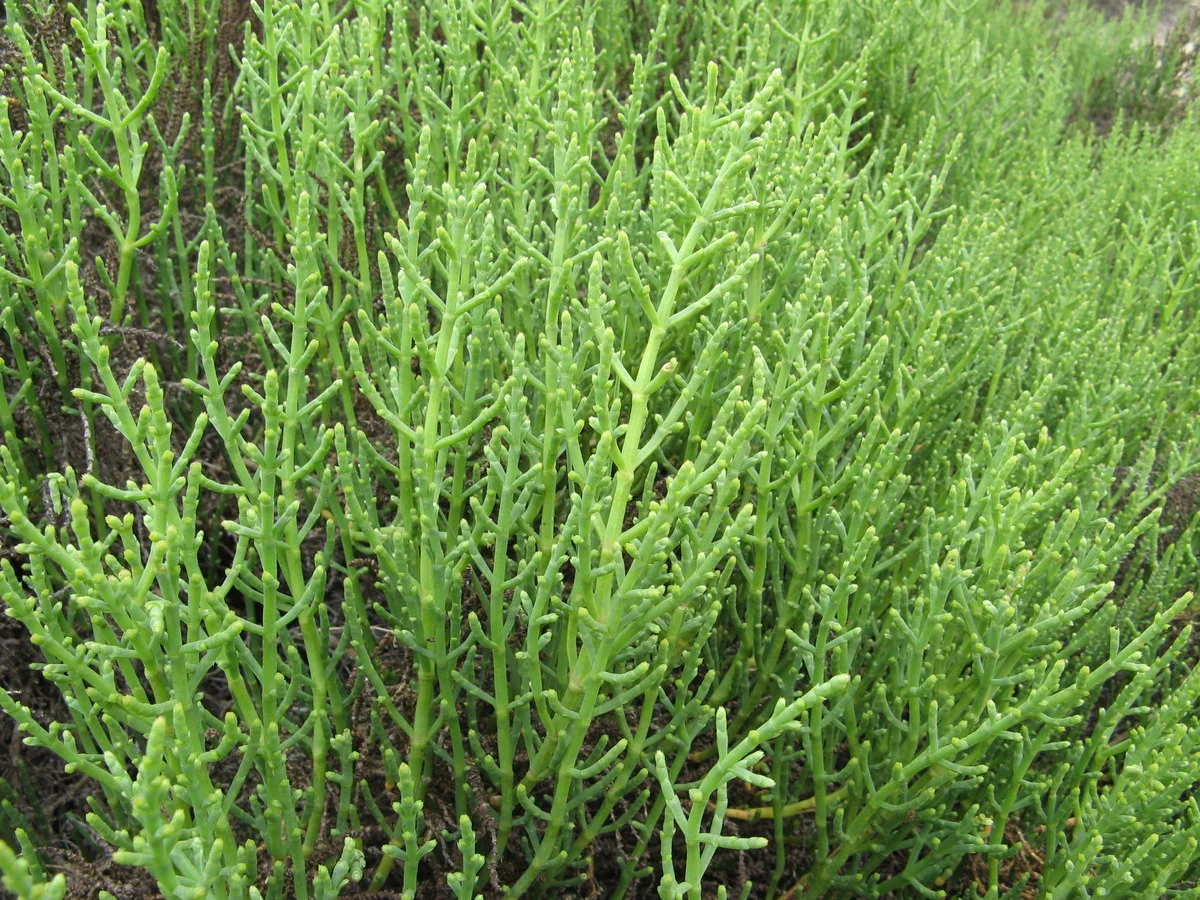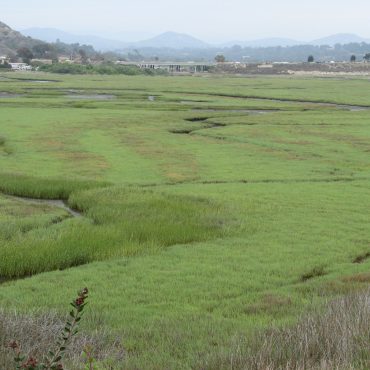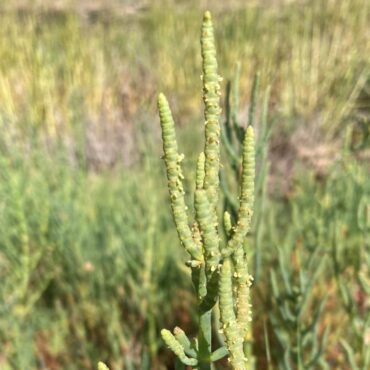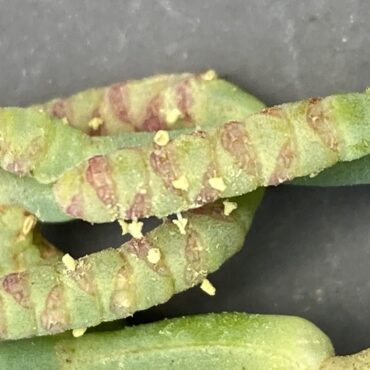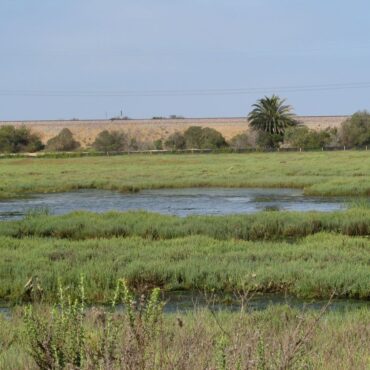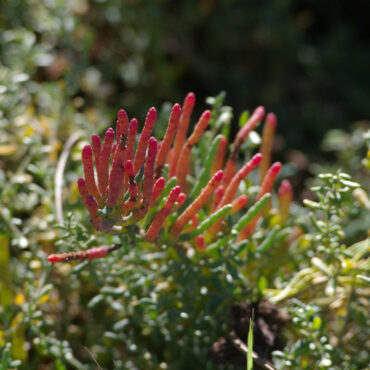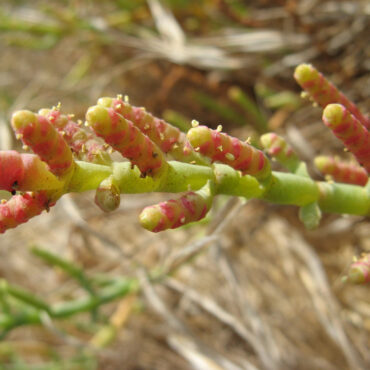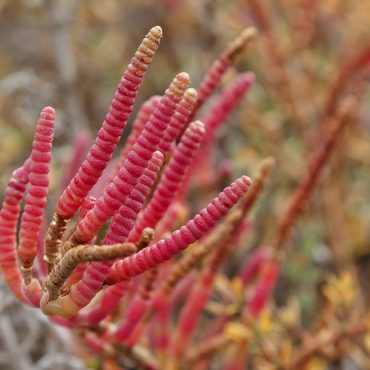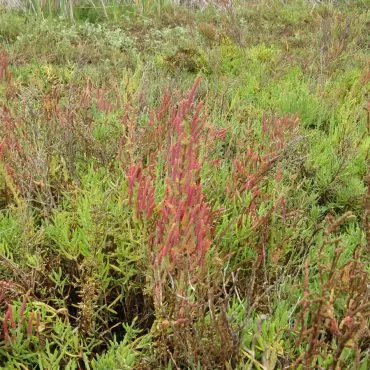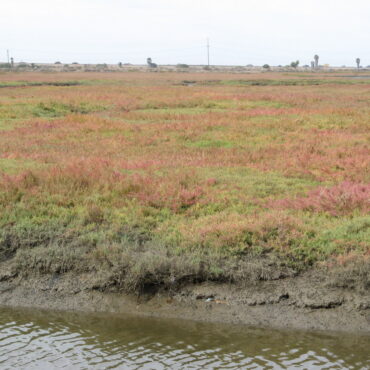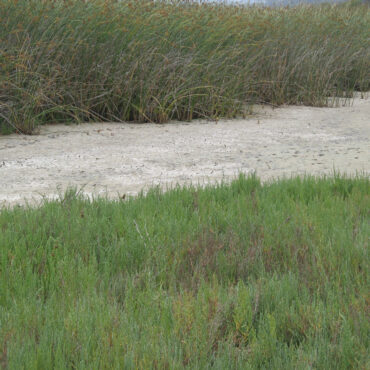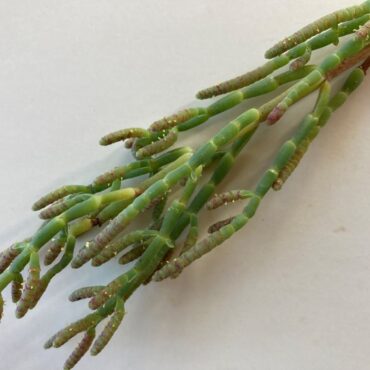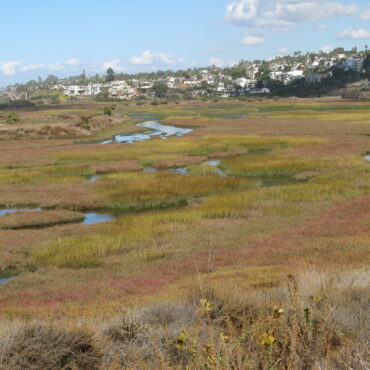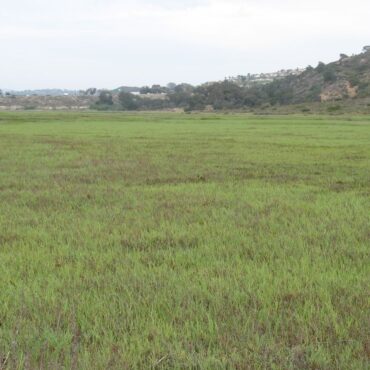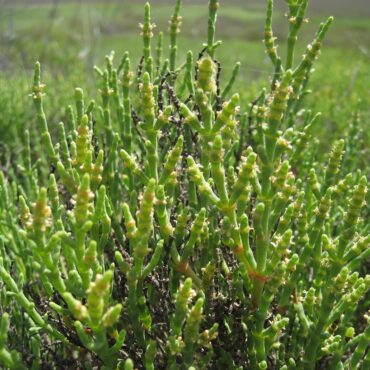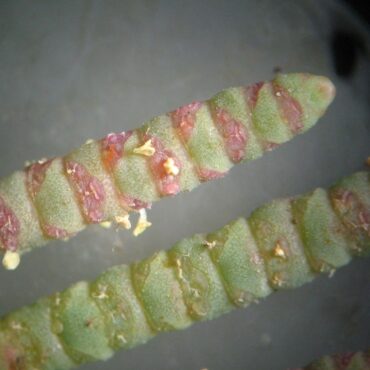Pickleweed is a name applied to several plants in the genera Salicornia and Arthrocnemum. Our most common pickleweed (S. pacifica), also called Pacific samphire or glasswort, is a low growing, succulent plant that dominates the mid-elevations of the salt marsh. Throughout the summer, its low, bright-green appearance gives the marsh a golf-course-like appearance.
By autumn, most pickleweeds are more red than green. More than 100 years ago, Parsons 399 wrote “Though a humble enough plant in itself, the samphire, or glasswort, is the source of a wonderful glory in our marshes in the autumn. Great stretches of tide-land . . . are covered by it, showing the most gorgeous blendings of crimson, purple, olives and bronzes, which, seen with all the added charm of shifting and changing atmospheric effects, far outrival any Oriental rug . . . ”

